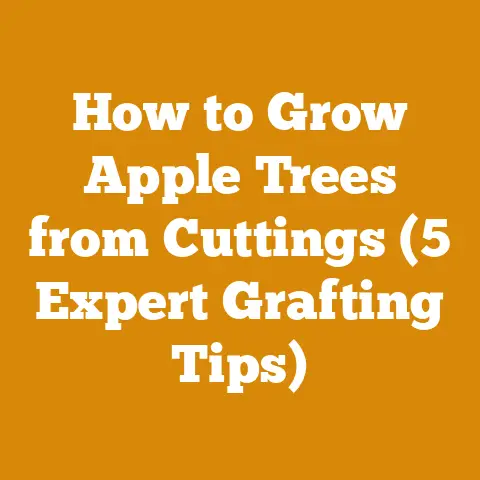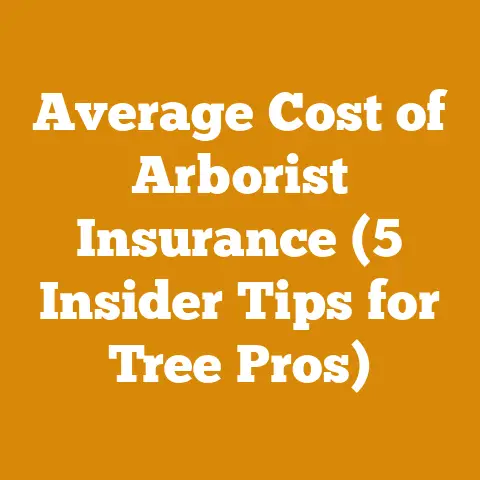Blade vs String Trimmer: Expert Tips for Tough Brush Clearing (Pro Insights)
WARNING: Brush clearing involves inherent risks.
Improper use of power equipment can lead to severe injury or even death.
Always wear appropriate personal protective equipment (PPE), including eye protection, hearing protection, gloves, and sturdy footwear.
Read and understand the manufacturer’s instructions for your equipment before operation.
If you are unsure about any procedure, seek guidance from a qualified professional.
Blade vs. String Trimmer: Expert Tips for Tough Brush Clearing (Pro Insights)
As someone who’s spent a good chunk of my life wrestling with unruly vegetation, I know firsthand the frustrations – and the dangers – of tackling tough brush.
Whether you’re reclaiming overgrown property, maintaining trails, or simply keeping your yard in check, the right tool makes all the difference.
The age-old question: blade or string trimmer?
It’s not just about preference; it’s about efficiency, safety, and the specific challenges your project presents.
Understanding the Intended Use
Before diving into the nitty-gritty, let’s clarify what we mean by “tough brush.” Are we talking about thick grass and weeds, saplings, brambles, or something else entirely?
The answer dictates the best approach.
For the purpose of this guide, I’m focusing on vegetation that exceeds the capabilities of a standard string trimmer with basic line but falls short of requiring a chainsaw.
Think thickets of blackberry bushes, stubborn patches of multiflora rose, small woody shrubs, and dense grass clumps.
String Trimmers: The Versatile Workhorse
String trimmers (also called weed eaters or weed whackers) are incredibly versatile tools.
They’re lightweight, maneuverable, and relatively inexpensive.
They excel at trimming grass, edging lawns, and clearing light weeds.
But how do they fare against tougher brush?
String Trimmer Strengths:
- Maneuverability: String trimmers can reach tight spaces and navigate around obstacles with ease.
This is a huge advantage when working in confined areas or around delicate plants you want to avoid. - Lightweight: Compared to brush cutters with blades, string trimmers are significantly lighter, reducing fatigue during extended use.
- Cost-Effective: String trimmers are generally less expensive than brush cutters, making them an accessible option for homeowners and small property owners.
- Edging Capabilities: String trimmers create clean, precise edges along sidewalks, driveways, and flower beds.
- Variety of Line Options: Different line types and thicknesses are available for varying levels of vegetation.
Round lines are the most common, but square, twisted, and serrated lines offer increased cutting power.
String Trimmer Limitations:
- Limited Cutting Capacity: String trimmers struggle with thick, woody stems and dense vegetation.
The string can easily break or wrap around tough stalks. - Inefficiency with Dense Brush: Clearing large areas of dense brush with a string trimmer can be time-consuming and physically demanding.
- Line Breakage: Frequent line breakage can interrupt work and increase operating costs.
- Flying Debris: String trimmers can fling debris at high speeds, posing a safety hazard.
- Less Effective on Wet Vegetation: Wet grass and weeds tend to wrap around the trimmer head, reducing cutting efficiency.
String Trimmer Line: A Technical Deep Dive
The string itself is critical.
The diameter of the line determines its cutting power and durability.
Here’s a general guideline:
- 0.065″ – 0.080″: Ideal for light grass and weeds.
- 0.085″ – 0.105″: Suitable for medium-duty tasks, including thicker grass and small weeds.
- 0.110″ and higher: Designed for heavy-duty brush and tough vegetation.
Beyond diameter, the shape of the line also matters.
As I mentioned above, square, twisted, and serrated lines provide more aggressive cutting action.
However, they also tend to wear down faster and are more prone to breakage.
My Experience: I once tried to clear a patch of blackberry bushes with a standard round line.
It was a disaster.
The line kept snapping, and I spent more time replacing it than actually cutting.
Switching to a square, 0.095″ line made a world of difference.
It sliced through the thorny canes with much greater ease.
Technical Tip: When selecting string trimmer line, consider the material.
Nylon is the most common, but copolymer blends offer improved durability and impact resistance.
String Trimmer Safety: The First Priority
- Eye Protection: Always wear safety glasses or a face shield to protect your eyes from flying debris.
- Hearing Protection: String trimmers can generate high noise levels.
Use earplugs or earmuffs to prevent hearing damage. - Gloves: Wear sturdy gloves to protect your hands from cuts and abrasions.
- Long Pants and Sleeves: Cover your skin to minimize the risk of injury from flying debris.
- Sturdy Footwear: Wear closed-toe shoes or boots with good ankle support.
- Clear the Area: Before starting, remove any rocks, branches, or other debris that could be thrown by the trimmer.
- Be Aware of Your Surroundings: Pay attention to people, pets, and obstacles in the area.
- Never Modify the Trimmer: Using non-approved attachments or modifications can compromise safety.
Brush Cutters with Blades: The Heavy Hitters
Brush cutters equipped with blades are designed to tackle tougher vegetation than string trimmers.
They offer greater cutting power and efficiency when dealing with thick brush, saplings, and woody stems.
Brush Cutter Strengths:
- High Cutting Power: Blades can easily slice through thick brush and small trees.
- Efficiency in Dense Brush: Brush cutters can clear large areas of dense brush much faster than string trimmers.
- Durability: Blades are more durable than string and can withstand repeated use in harsh conditions.
- Versatility with Blade Options: Different blade types are available for various cutting tasks.
Brush Cutter Limitations:
- Heavier and Less Maneuverable: Brush cutters are heavier and more cumbersome than string trimmers, making them less suitable for tight spaces and delicate work.
- Higher Cost: Brush cutters are generally more expensive than string trimmers.
- Greater Risk of Injury: Blades pose a greater risk of injury than string.
- Maintenance: Blades require periodic sharpening and replacement.
- More Vibration: Brush cutters tend to vibrate more than string trimmers, which can lead to fatigue.
Blade Types: Choosing the Right Tool for the Job
The type of blade you use is crucial for optimal performance and safety.
Here’s an overview of common blade types:
- Brush Blades (Circular Saw Blades): These blades feature multiple teeth and are designed for cutting through thick brush, saplings, and small trees.
They are available in various sizes and tooth configurations.- Number of Teeth: More teeth generally result in a smoother cut, while fewer teeth provide more aggressive cutting action.
- Tooth Shape: Different tooth shapes are designed for specific cutting tasks.
Chisel teeth are ideal for cutting through wood, while raker teeth help clear debris. - Blade Diameter: Larger diameter blades can cut through thicker vegetation but require more power.
- Grass Blades (Tri-Blades or Multi-Blades): These blades are designed for cutting grass and weeds.
They are less aggressive than brush blades and are suitable for lighter-duty tasks.- Tri-Blades: Feature three cutting edges and are ideal for cutting through thick grass and weeds.
- Multi-Blades: Feature multiple cutting edges and are designed for finer cutting tasks, such as edging and trimming.
- Chisel Tooth Blades: These blades are specifically designed for cutting wood.
The chisel-shaped teeth provide aggressive cutting action and are ideal for felling small trees and clearing thick brush. - Flail Blades: These blades are designed for heavy-duty brush clearing.
They feature hinged flails that swing out upon impact, providing a wide cutting swath and reducing the risk of kickback.
Technical Specifications for Blades:
My Case Study: I once used a brush cutter with a 60-tooth brush blade to clear a dense thicket of multiflora rose.
The blade sliced through the thorny canes with ease, and I was able to clear the area in a fraction of the time it would have taken with a string trimmer.
However, I quickly learned the importance of wearing proper PPE.
A small piece of debris ricocheted off a branch and struck my safety glasses.
Without them, I would have suffered a serious eye injury.
Key Data Point: According to a study by the National Institute for Occupational Safety and Health (NIOSH), eye injuries are the most common type of injury associated with brush cutter use.
Brush Cutter Safety: A Non-Negotiable
- Full PPE: Always wear a full face shield, hearing protection, gloves, long pants, long sleeves, and sturdy boots.
- Proper Blade Installation: Ensure the blade is properly installed and secured according to the manufacturer’s instructions.
- Anti-Vibration Gloves: Consider using anti-vibration gloves to reduce fatigue and the risk of hand-arm vibration syndrome (HAVS).
- Harness or Shoulder Strap: Use a harness or shoulder strap to distribute the weight of the brush cutter and reduce fatigue.
- Clear the Area: Remove any obstacles from the cutting area.
- Maintain a Safe Distance: Keep bystanders at least 50 feet away from the cutting area.
- Be Aware of Kickback: Kickback occurs when the blade strikes a solid object, causing the brush cutter to suddenly recoil.
Be prepared for kickback and maintain a firm grip on the handles. - Never Cut Above Shoulder Height: Cutting above shoulder height increases the risk of losing control of the brush cutter.
- Inspect the Blade Regularly: Check the blade for damage or wear before each use.
Replace damaged or worn blades immediately. - Sharpen the Blade Regularly: A sharp blade cuts more efficiently and reduces the risk of kickback.
Power Source: Gas vs. Electric (Battery)
Both string trimmers and brush cutters are available in gas-powered and electric (battery-powered) versions.
Each power source has its own advantages and disadvantages.
Gas-Powered:
- Pros:
- More Power: Gas-powered models generally offer more power than electric models.
- Longer Run Time: Gas-powered models can run for extended periods without needing to be recharged.
- Portability: Gas-powered models are not limited by battery life or power cords.
- Cons:
- Higher Maintenance: Gas-powered models require more maintenance than electric models, including oil changes, spark plug replacements, and carburetor cleaning.
- Noisier: Gas-powered models are typically louder than electric models.
- Emissions: Gas-powered models produce emissions, which can be harmful to the environment.
- Heavier: Gas-powered models tend to be heavier than electric models.
Electric (Battery-Powered):
- Pros:
- Lower Maintenance: Electric models require less maintenance than gas-powered models.
- Quieter: Electric models are typically quieter than gas-powered models.
- Zero Emissions: Electric models produce zero emissions.
- Lighter: Electric models tend to be lighter than gas-powered models.
- Cons:
- Less Power: Electric models may not offer as much power as gas-powered models.
- Limited Run Time: Battery life can be a limiting factor, especially for larger projects.
- Charging Time: Batteries require time to recharge.
- Battery Cost: Replacement batteries can be expensive.
My Recommendation: For occasional use and smaller properties, an electric model might suffice.
However, for larger properties and heavy-duty brush clearing, a gas-powered model is generally the better choice.
Battery technology is constantly improving, so keep an eye on new developments.
Technical Note: When choosing a battery-powered model, pay attention to the voltage and amp-hour (Ah) rating of the battery.
Higher voltage and Ah ratings generally translate to more power and longer run time.
Ergonomics and Comfort
Clearing brush can be physically demanding, so ergonomics and comfort are important considerations.
- Handle Design: Look for a model with comfortable, ergonomic handles that provide a secure grip.
- Adjustable Harness: An adjustable harness can help distribute the weight of the tool and reduce strain on your back and shoulders.
- Anti-Vibration System: An anti-vibration system can help reduce fatigue and the risk of HAVS.
- Weight: Choose a model that is lightweight enough for you to handle comfortably for extended periods.
Maintenance: Keeping Your Tools in Top Shape
Proper maintenance is essential for ensuring the longevity and performance of your string trimmer or brush cutter.
String Trimmer Maintenance:
- Clean the Trimmer Head: Regularly clean the trimmer head to remove grass, weeds, and other debris.
- Replace the String: Replace the string when it becomes worn or damaged.
- Inspect the Air Filter: Clean or replace the air filter as needed.
- Check the Spark Plug: Inspect the spark plug and replace it if necessary (gas-powered models).
- Lubricate Moving Parts: Lubricate moving parts as recommended by the manufacturer.
- Store Properly: Store the trimmer in a dry, protected location.
Brush Cutter Maintenance:
- Sharpen the Blade: Sharpen the blade regularly to maintain optimal cutting performance.
- Inspect the Blade: Check the blade for damage or wear before each use.
Replace damaged or worn blades immediately. - Clean the Cutting Head: Regularly clean the cutting head to remove debris.
- Inspect the Air Filter: Clean or replace the air filter as needed.
- Check the Spark Plug: Inspect the spark plug and replace it if necessary (gas-powered models).
- Lubricate Moving Parts: Lubricate moving parts as recommended by the manufacturer.
- Store Properly: Store the brush cutter in a dry, protected location.
My Pro Tip: I keep a small toolbox dedicated to my brush clearing tools.
It contains spare string, a sharpening file, wrenches, screwdrivers, and a can of lubricant.
This ensures that I have everything I need to perform basic maintenance in the field.
Making the Decision: Blade or String?
So, which tool is right for you? Here’s a summary to help you decide:
Choose a String Trimmer if:
- You primarily need to trim grass and weeds.
- You have a small property with light vegetation.
- You need to edge along sidewalks and driveways.
- Maneuverability is a top priority.
- Cost is a major concern.
Choose a Brush Cutter with a Blade if:
- You need to clear thick brush, saplings, and woody stems.
- You have a large property with dense vegetation.
- Efficiency is a top priority.
- You are comfortable using a more powerful and potentially dangerous tool.
- You are willing to invest in proper PPE and maintenance.
The Hybrid Approach:
In some cases, the best solution may be to use both a string trimmer and a brush cutter.
Use the string trimmer for light tasks and the brush cutter for tougher jobs.
This approach allows you to tackle a wide range of vegetation with maximum efficiency.
Understanding Wood Density and its Impact on Brush Clearing
While we’re primarily focusing on the tools themselves, it’s crucial to understand the material you’re cutting.
Wood density plays a significant role in how easily vegetation can be cleared.
- Hardwoods vs.
Softwoods: Hardwoods (like oak, maple, and hickory) are generally denser and more difficult to cut than softwoods (like pine, fir, and spruce).
This means you’ll need a more powerful blade and a sharper edge to tackle hardwoods effectively. - Moisture Content: Green wood (freshly cut wood) is typically easier to cut than dry wood because the moisture acts as a lubricant.
However, green wood is also heavier and more prone to warping and cracking as it dries. - Stem Diameter: The diameter of the stem is a key factor in determining the appropriate tool.
String trimmers are generally only effective on stems less than 1/2 inch in diameter.
Brush cutters can handle stems up to 2-3 inches in diameter, depending on the blade and the power of the tool.
Data Point: The density of wood is typically measured in pounds per cubic foot (lbs/ft³).
Oak, for example, has a density of around 45 lbs/ft³, while pine has a density of around 30 lbs/ft³.
Environmental Considerations
Brush clearing can have a significant impact on the environment.
It’s important to consider the following factors:
- Erosion Control: Clearing vegetation can expose soil to erosion.
Take steps to prevent erosion, such as planting cover crops or installing erosion control barriers. - Wildlife Habitat: Brush provides important habitat for wildlife.
Avoid clearing large areas of brush during nesting season. - Invasive Species: Be careful not to spread invasive species.
Clean your equipment thoroughly after working in areas with invasive plants. - Fire Hazards: Dry brush can be a fire hazard.
Remove cleared brush from the area promptly and dispose of it properly.
My Personal Story: I once cleared a large area of brush along a creek bank without taking adequate precautions to prevent erosion.
The resulting soil erosion caused significant damage to the creek and its ecosystem.
I learned a valuable lesson about the importance of environmental stewardship.
Conclusion: Mastering the Art of Brush Clearing
Choosing between a blade and a string trimmer for tough brush clearing isn’t just about picking a tool; it’s about understanding the task, the limitations of each tool, and prioritizing safety.
By carefully considering the factors outlined in this guide, you can make an informed decision and tackle your brush clearing projects with confidence and efficiency.
Remember, the right tool, used safely and responsibly, can transform an overgrown mess into a manageable landscape.
And always, always wear your PPE.






